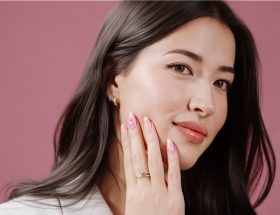
A lace wig has the potential to transform your appearance and self-perception, but only if it resembles your natural hair. These types of wigs are constructed with a delicate lace foundation that rests against your scalp, creating the illusion that the hair is emerging directly from your skin. This quality is what makes them highly sought after for achieving a realistic hairline and authentic look. The key? It begins with selecting the right one. One that aligns with your hair texture, accommodates your head shape, and feels like you.
From the lace material to the length, every detail is crucial. The appropriate choice can enhance your confidence, allow you to feel more like yourself, and relieve you from the burden of daily styling challenges.
Identify Your True Hair Texture and Type
To ensure your lace top wig mimics real hair, start by understanding your natural texture. Is your hair straight, wavy, curly, or coily? Aligning your wig’s texture with your own facilitates a seamless blend. Furthermore, consider the density of your hair. Is it fine, thick, or somewhere in between? These subtle characteristics are significant. Human hair wigs provide a more authentic texture and feel, though they may be pricier. Synthetic wigs are more affordable, but they might not move or appear as lifelike. Nonetheless, there are some high-quality synthetic options worth considering. If feasible, try contrasting wig textures in person. This simplifies the evaluation of what suits you.
Select the Appropriate Lace Type for an Authentic Hairline
The lace portion of your wig contributes to its natural look. It lays against your skin, making the selection of the suitable type essential. There are various kinds: HD lace, transparent lace, and Swiss lace. HD lace is ultra-thin and seamlessly blends with most skin tones. Transparent lace works well for lighter skin tones. Swiss lace is durable yet retains a natural appearance. Always choose a lace color that complements your scalp rather than your face. This helps it integrate with your skin. Pre-plucked hairlines mimic real hair more closely. They feature baby hairs and a softer edge. If your wig isn’t pre-plucked, you can either do it yourself or consult a stylist. A well-defined hairline can greatly enhance the look. When the lace is appropriate, your wig will appear as though it is growing from your scalp.
Correspond the Wig Color to Your Natural Shade
Selecting the correct color is vital for making your wig resemble real hair. Begin by examining your roots and the hue of your natural locks. Aim to match that color as closely as possible. If your hair has warm undertones, opt for a wig that features golden or reddish hues. For cool undertones, look for ash or neutral tones. Some wigs include highlights or darker roots, which can enhance their realism. Remember to evaluate the color in natural light. What appears suitable indoors might look different outside. If in doubt, consult a stylist or obtain a color ring.
Consider Wig Density and Length
Wig density indicates how full or thick the hair appears. To make your wig look authentic, opt for a density that corresponds to your natural hair. If your hair is fine, a high-density wig may appear overly bulky or artificial. Typical densities range from 130% (light) to 180% (full). Many individuals find that 150% provides a natural yet ample look. Length also significantly influences appearance. Choose a length that resembles your usual hairstyle for a more cohesive look. Longer wigs can exude glamour, but they may entail more maintenance and could tangle easily. Shorter wigs are generally easier to manage and often appear more genuine.
Focus on Cap Size and Construction
A quality wig begins with the appropriate cap. If it doesn’t fit correctly, it won’t appear natural, regardless of the hair quality. Measure your head before purchasing. Use a soft measuring tape to determine the circumference from your forehead, around your ears, and nape of your neck. Most wigs are available in small, medium, or large sizes, but some feature adjustable straps for a personalized fit. Next, examine the cap type. Lace front wigs offer a naturally appearing hairline. Full lace wigs provide versatile styling options but may be pricier. 360 lace wigs accommodate ponytails and updos. Glueless wigs are ideal for novices and prevent glue-related damage. Comfort is also essential, so seek out breathable caps that feel light against your scalp. A tight, secure fit ensures the wig remains in place and feels like a part of you.
Assess Styling Flexibility and Parting Options
Finally, consider how the unit can be styled. Wigs with free parting or multiple part options offer greater flexibility in changing your hairstyle. You can create middle parts, side parts, or deep parts, just like with your natural hair. Some wigs come equipped with pre-plucked part lines, enhancing the authenticity. If you enjoy curling, straightening, or blow-drying, select a human hair wig that can tolerate heat. Synthetic wigs may not always withstand hot styling tools. Look for baby hairs or layered cuts.






